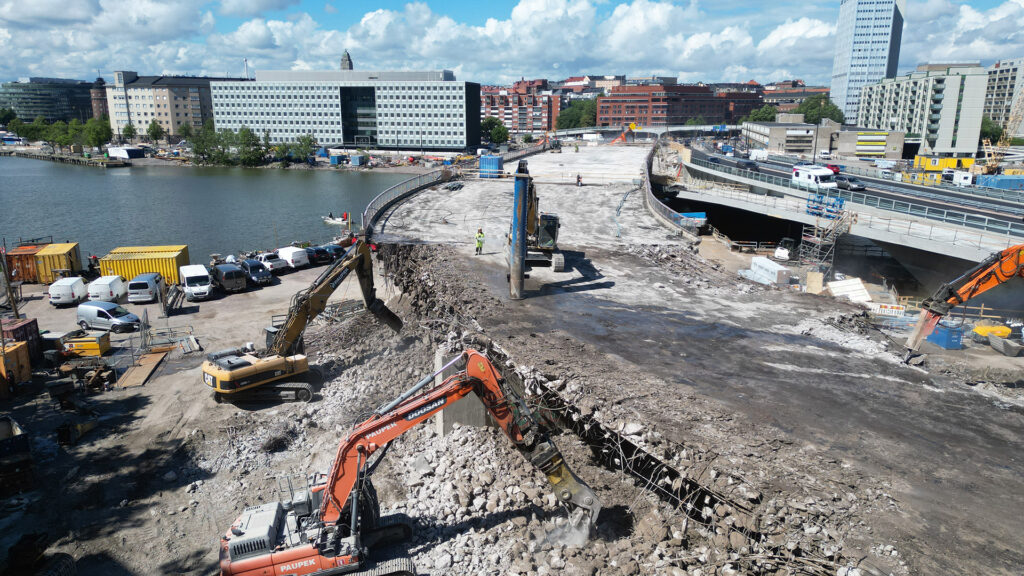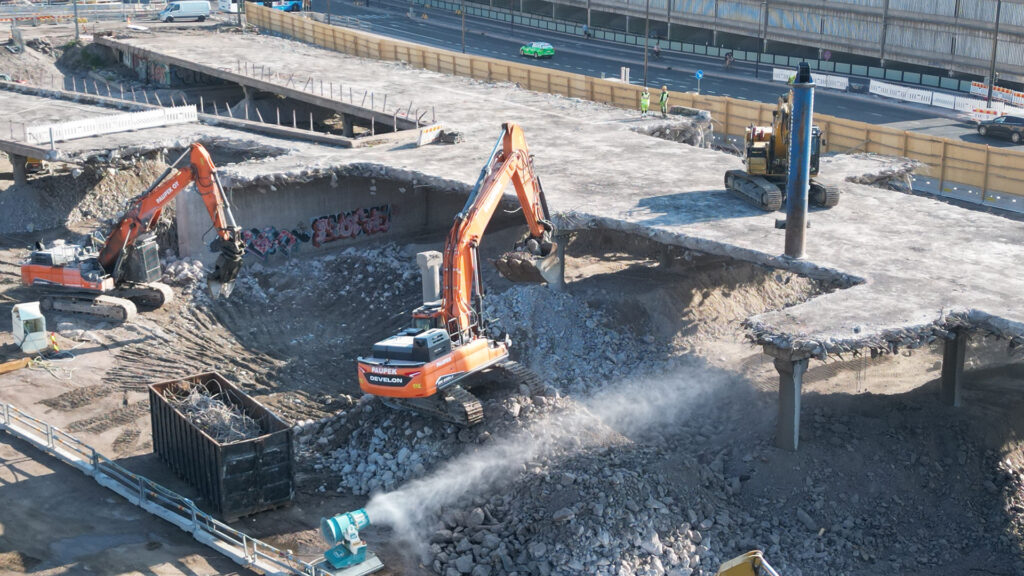Paupek Oy, a member of INFRA, dismantles the structures of the bridge that became useless in Hakaniemi, Helsinki, when the new brave bridge was opened at the beginning of June. The demolition work is part of the Kruunusillat project.

Those who come to or leave the center of Helsinki from the east have experienced it, and in recent months have sweated in its traffic jams. That part no longer exists, namely the old Hakaniemi bridge.
The old bridge was completed in 1961. At that time, the bridge was not waterproofed and partly because of this, the bridge had fallen into bad shape and it would not have been reasonable to repair it.
Recovered
"We started demolishing the bridge on June 3 and the work will be completed at the end of September", project manager of Paupek Oy's Helsinki region Ilpo Koskinen says.
"Approximately 33 tons of concrete is accumulated from the crushing and it is pulverized on the construction site. Rudus Oy transports the material to Länsisalmi, where it is processed into Betoroc. The concrete recycling rate will be 000."
The Betoroc crushed stone developed by Rudus is a CE-marked product that is well suited for earthworks. It is very likely that the concrete from the old bridge will end up filling Helsinki's streets and bike lanes.
"The iron goes into circulation one hundred percent. YIT, on the other hand, milled the asphalts of the surface structures and they go to Asfaltikkallio for processing", Ilpo Koskinen explains the reuse of materials.
"Always a little puffy when the sun dries the surface"
The demolition site is challenging. The demolition is partly done over water, there is a settlement nearby and we are almost in the center of Helsinki.
"We work from 7 a.m. to 18 p.m. There are seven water cannons on the construction site, whose mist is used to control dust during working hours. We use about 25 cubic meters of water per hour. In addition, we take seawater with fire sprinklers, which moisten the construction site around the clock," explains Koskinen, how to deal with the dust problem.
"Water cannons are constantly being moved to the targets to be pulverized. We have been 95 percent able to keep the dust under control. However, it always gets a little puffy when the sun dries the surfaces quickly in the summer."

Just a normal breakdown
Koskinen mentions the part of the water bridge as the most difficult part of the bridge demolition.
"With a wire saw, we cut the section into 32-35 ton pieces, which we lift onto the pallets with a 500 ton truck crane and move to the sorting area on the Hakaniemenranta side for further processing," says Ilpo Koskinen about the progress of the work.
"Otherwise, this is a normal bridge demolition, which has been carefully thought through in all aspects."
More information:
Hakaniemi's new bridge
The new bridge connects the north side of Kruununhaa and Sörnäinen beach road like the old one, but it is lower than the old bridge. The lower structure means the removal of the old bridge's massive ramps and space for new construction. Structurally, the new Hakaniemensilta can be considered quite exceptional, as it has no upper support at all. Usually, a bridge with such a long span has a cable-stayed or suspension structure. Such a thing was not wanted for this bridge for urban image reasons: the new bridge, as a low line, does not stand out from its surroundings like the old one. It was designed to be so lightweight that it does not require support from above.
Source: City of Helsinki
More information: https://kruunusillat.fi/rakentaminen/hakaniemi/